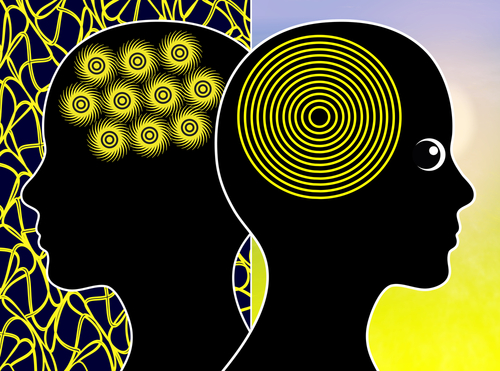Vertical Leadership Development Explained
This is one of our free-to-access content pieces. To gain access to all Ideas for Leaders content please Log In Here or if you are not already a Subscriber then Subscribe Here.

Most leadership development is focused on adding new tools and competencies, what might be called ‘horizontal development.’ However, ‘vertical development’ — developing, updating or changing a leader’s mindset and mental models — is equally important. Vertical leadership development is contingent on three conditions: ‘heat experiences’, ‘colliding perspectives’, ‘elevated sensemaking’.
Traditional leadership development focuses on adding more information, skills and competencies to a leader’s toolkit. Thus the leader might learn new ways to develop staff, for example, or new methodologies for communicating more effectively.
Vertical development, according to CCL’s Nick Petrie, takes a radically different approach. The goal of vertical development is not to add more skills or knowledge, but to develop the ‘mind’ of the leader.
Petrie uses the metaphor of a plastic cup to explain the difference. Traditional leadership development is about adding content to the cup. Vertical development is about increasing the size of the cup. Specifically, it means working on developing the mindset, mental models and identity of the leader.
In a white paper entitled, The How-To of Vertical Leadership Development, Petrie explains how to implement Vertical Leadership Development. The key is to recognize that three primary conditions must be in place in order for Vertical Leadership Development to be possible. Without all three being in place, Vertical Leadership Development does not occur.
The first condition is what Petrie calls Heat Experiences. These are events or situations to which leaders cannot respond with their current way of thinking. Unable to make sense of their challenges, they minds open up and they start for new and better ways to respond. Heat experiences can be summarized as the ‘what,’ and they initiate the process.
The second condition is Colliding Perspectives. Leaders in this phase are exposed to people with different perspectives and backgrounds, which challenges their existing mindsets and mental models. This is the ‘who’ phase, and it enables vertical development.
The third primary condition is Elevated Sensemaking. Through the help of processes or coaches, leaders integrate the new perspectives and experiences, and thus develop a larger, more advanced worldview that, over time, stabilizes.
Vertical development does not replace horizontal development. Both are equally important. In the past, however, too much attention has been paid to adding skills and methodologies, and not enough to changing the mindsets and perspectives of high-potential leaders. By focusing on both approaches, companies can develop leaders who have the wisdom to choose the right strategies (thanks to vertical development) as well as the skills and experience to implement them (thanks to horizontal development).
The goal of a vertical development program should be to help leaders experience the three conditions required for vertical development in equal balance. There are a number of different approaches or tools that can be used. These are not stand-alone tools, but more a sampling of ‘ingredients’ for vertical development that can be combined.
For example, one way a company can create the conditions for heat experiences is by building a culture that encourage learning projects with some risk of failure involved. Playing it safe is not going to give leaders any heat experiences. Another idea is to give assignments to the least qualified people. The reason: this gives them the opportunity what they have never experienced, which leads to learning.
To create colliding perspectives, a company’s development professionals might design experiences that require leaders to look through the perspectives of different stakeholders. Another suggestion is to create cross-functional teams who peer-coach each other on actual challenges and problems. A third approach is to help leaders develop ‘polarity thinking’ — the ability to see two sides of an issue and to realize that neither side is completely wrong or right. Exercises that ask leaders to identify the polarities in real business issues can be helpful.
There are an equally diverse number of ways to create the third condition, elevated sensemaking. A good starting point is the use of stage maps, developed by researchers who have mapped the stages through which adults evolve. With the guidance of a facilitator, leaders should identify and review their current stage, and then explore how they might develop to move on to the next stage. Another excellent development opportunity for elevated sensemaking is to work with late-stage mentors. Their ‘map of reality’ on where you are in your development and how you need to advance will probably be significantly different from yours.
The best leadership development programs will develop leaders vertically and horizontally at the same time. The methods in this article offer suggestions for the vertical component of this holistic approach.

Ideas for Leaders is a free-to-access site. If you enjoy our content and find it valuable, please consider subscribing to our Developing Leaders Quarterly publication, this presents academic, business and consultant perspectives on leadership issues in a beautifully produced, small volume delivered to your desk four times a year.

For the less than the price of a coffee a week you can read over 650 summaries of research that cost universities over $1 billion to produce.
Use our Ideas to:
Speak to us on how else you can leverage this content to benefit your organization. info@ideasforleaders.com